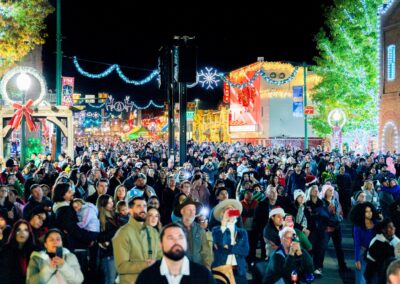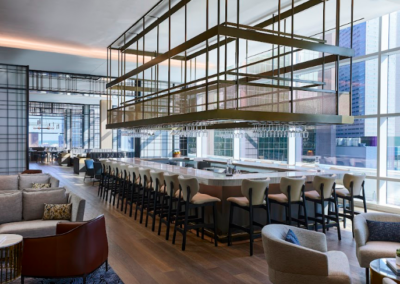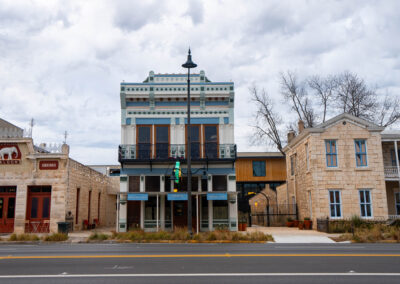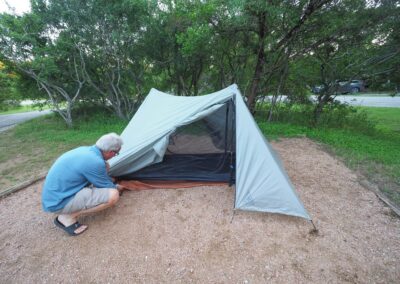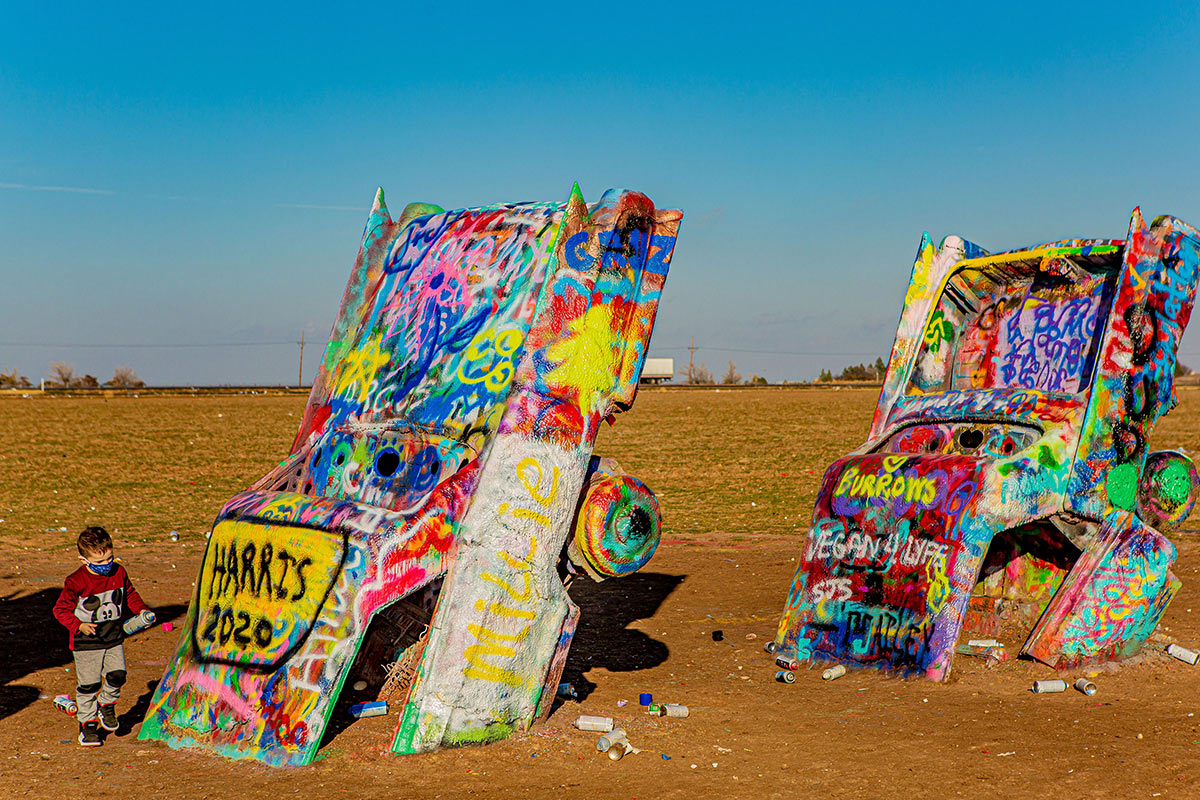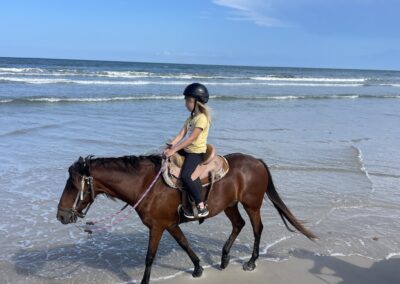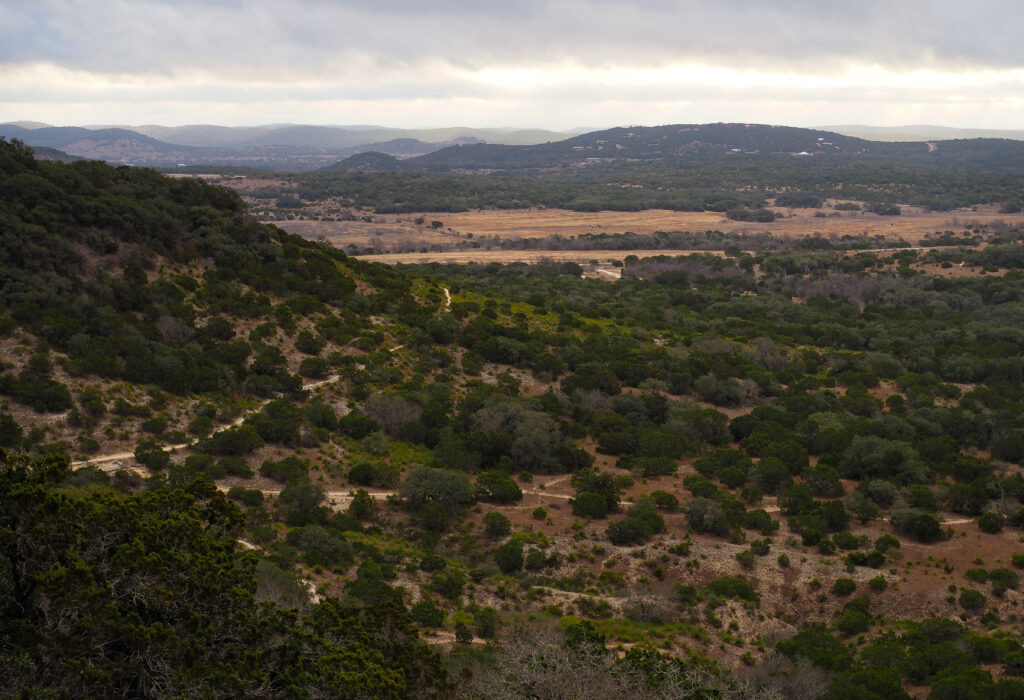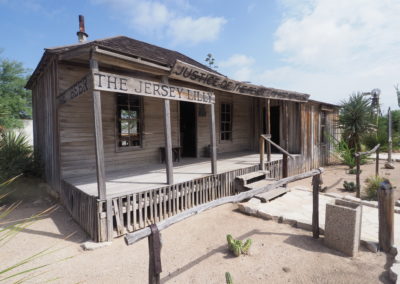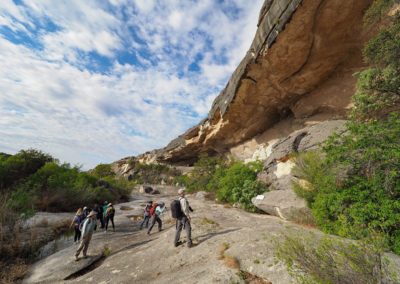
Visitors can step inside the Jersey Lilly Saloon at the Judge Roy Bean museum in Langtry. Pam LeBlanc photo
All good Texans know that Judge Roy Bean served up a questionable version of justice from a saloon and pool hall in the cactus-studded territory west of the Pecos River.
There, according to lore, Bean tapped his favorite barroom customers to serve as jury members in trials held on the front porch of his tavern, named for a British actress he never met.
Today, travelers can still clomp through the old wood-plank Jersey Lilly Saloon on the grounds of the Judge Roy Bean Museum and Travel Information Center in tiny Langtry, but they can’t play pool, swig beer or determine the fate of the accused. The rest stop and museum is located on Highway 90 between Del Rio and Sanderson, making it a convenient pit stop for road trippers taking the scenic route to the Big Bend.
Bean’s appointment as the first justice of the peace in dusty Pecos (now Val Verde) County was ironic.
Related: Six places to park your campervan in Texas
He’d been high tailing it from creditors and lawmen for years when he opened a store in the tent community of Vinegarroon, where a rowdy crowd of workers lived while they laid railroad tracks through West Texas. The railroad company asked for help controlling the lawlessness, and somehow Bean landed the job.
Who was Judge Roy Bean?
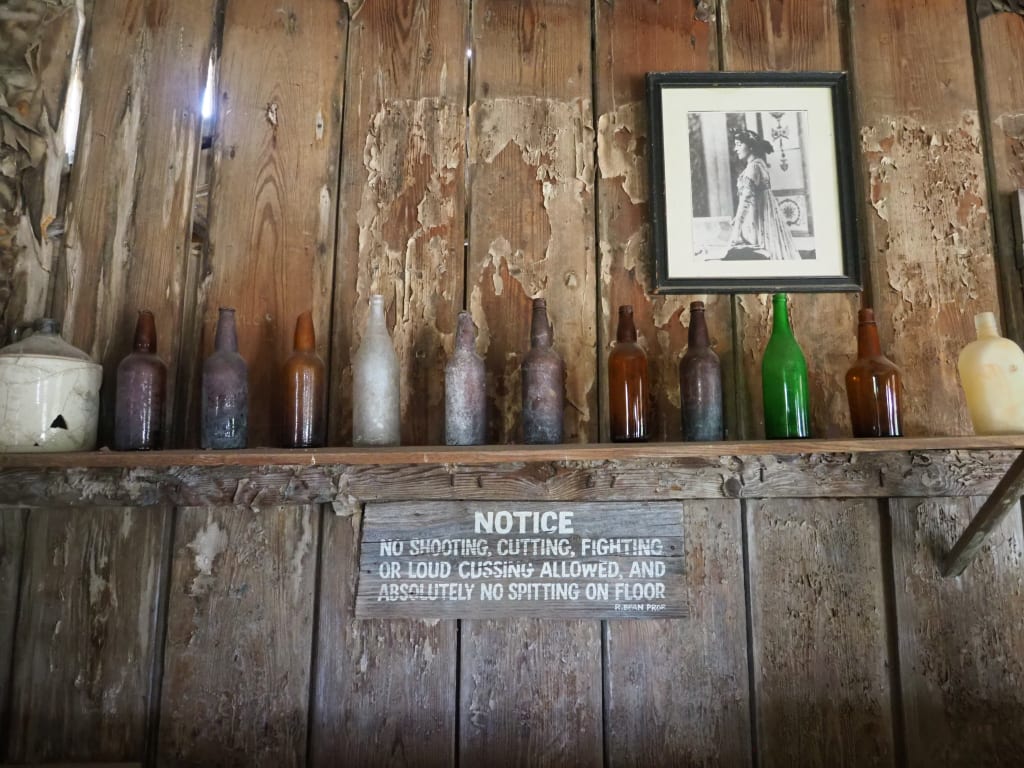
No spitting or shooting is allowed inside the Jersey Lilly Saloon at the Judge Roy Bean Museum in Langtry. Photo by Pam LeBlanc
A man with a questionable past, who had shot a man dead, busted out of prison using knives concealed inside tamales and suffered a severe rope burn injury when a girlfriend slit him free from a hanging noose, was now representing the long arm of the law, or so the story goes.
Related: Thirteen things to love about Lubbock
Bean soon moved his “court” from the tent city of Vinegarroon to nearby Langtry, where he opened the Jersey Lilly saloon, named either for the actress Lillian Langtry of Britain, or a construction foreman.
It’s hard to separate fact from fiction, but colorful tales abound about Bean’s time wielding the gavel. According to one story, defendants awaiting trial were sometimes chained to a tree outside the saloon. According to another, a defendant could pay the fine for a minor offense by buying a round of drinks for the judge, jury and everyone else in the Jersey Lilly. Bean was also known for confiscating valuables like horses.
Bean certainly fuzzed the line between good and bad.
As for Lillian Langtry, Bean mailed her flattering letters and tried to lure her to Texas by calling his house (also located on the visitor center grounds) the Opera House. She didn’t take the bait, although she did gift the justice with a water fountain. She finally made it to Langtry, months after Bean had died. (Bean is buried on the grounds of Whitehead Memorial Museum in Del Rio.)
Exhibits at the visitors center

A garden filled with prickly plants is adjacent to the Judge Roy Bean museum and visitors center in Langtry. Photo by Pam LeBlanc
The exhibits at Langtry focus mostly on the facts. Visitors can peruse dioramas that bring some of the tales of the time to life: Bean’s stint as a barkeep, construction of the nearby High Bridge over the Pecos River and an illegal boxing match staged in the middle of the Rio Grande.
Besides the old saloon and the nicely air-conditioned roadside museum — always a plus in hot and dusty West Texas — visitors can stroll a garden planted with an array of cactus. A walk through the Cactus Garden Interpretive Trail of Southwestern Flora, filled with thorn-studded plants, will make you appreciate boots and long pants when you’re exploring the desert. (Informative signs also describe the usefulness of each shin-shredding plant.)
Before you depart, make one final swing through the travel center for maps, brochures and tips on nearby points of interest and highway conditions.
History buffs will enjoy the stop.
If You Go

Getting there:
The Judge Roy Bean Visitor Center is located on Highway 90/West Loop 25 in Langtry. Hours are 8 a.m. to 5 p.m. daily. For more information call 432-291-3340. Admission is free.

Stay:
Camp at Seminole Canyon State Park, about 30 minutes away in Comstock.
Do:
Check out exhibits in the visitor center, walk through the Jersey Lilly Saloon, then stroll the adjacent gardens.
Eat & Drink:
Grab a burger and a beer at J&P Bar and Grill in Comstock, a 30-minute drive east on Highway 90. You’ll see the towering handmade Eat Here sign atop a pole.

Pro Tip:
If you’re interested in ancient rock art, drop by headquarters of Shumla Archaeological Education and Research Center, which is based in nearby Comstock.








